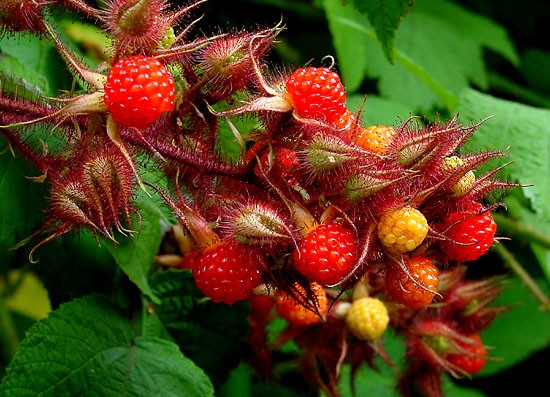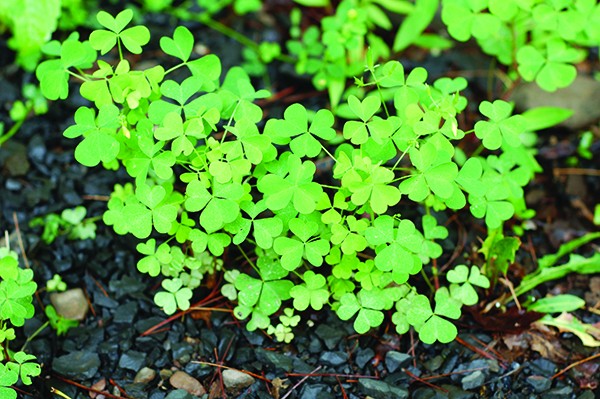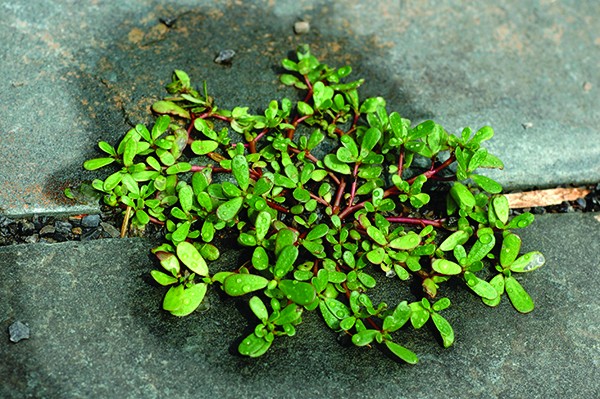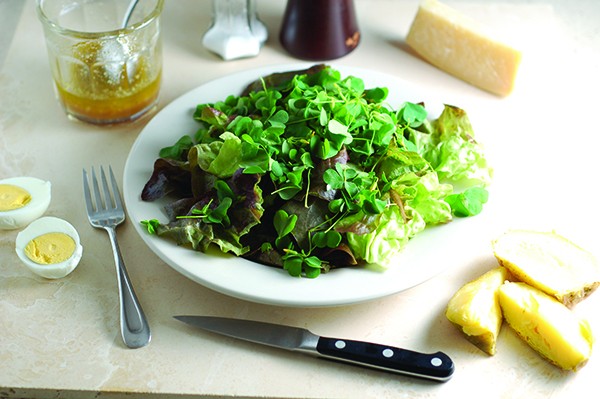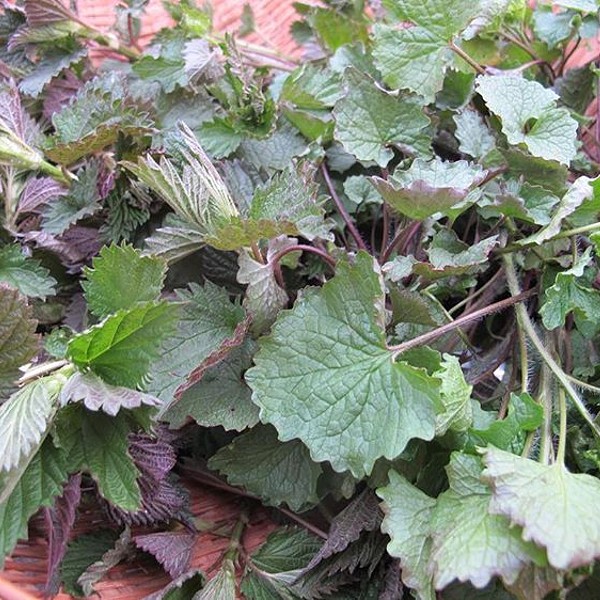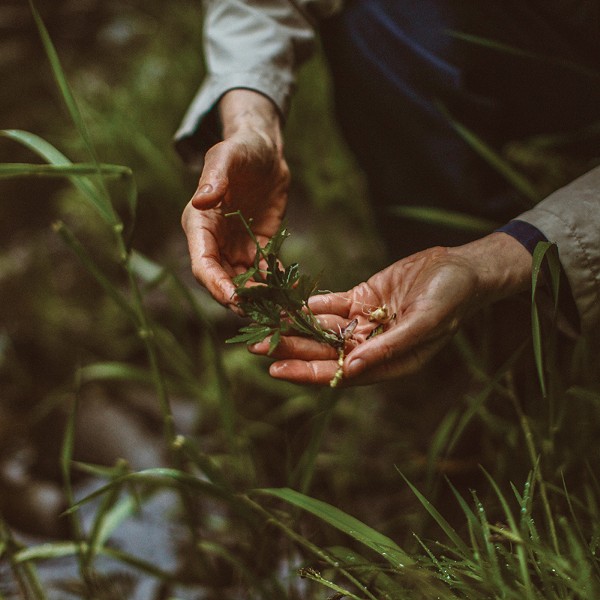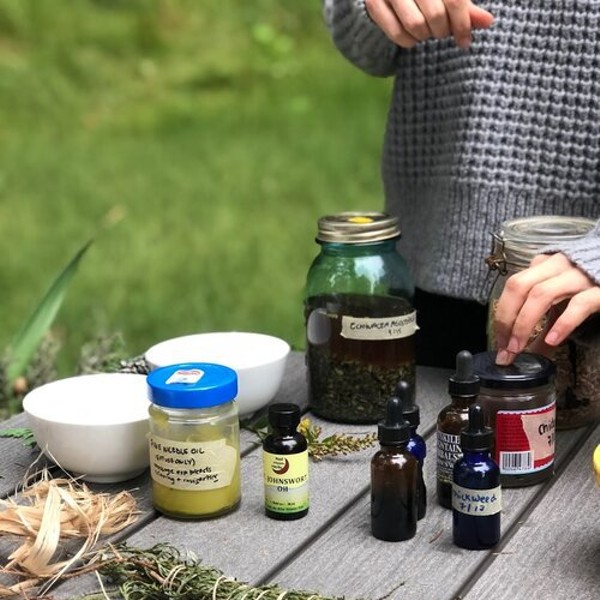Whether you live in a town or out in the woods, food is never far in the Hudson Valley—if you know where to look. Wild edibles abound here. I'll never forget the thrill I felt the first time I sniffed the distinctive odor of a wild garlic plant I'd yanked out of the dirt on the lawn of the Woodstock Children's Center during recess. And the novelty hasn't worn off yet. In fact, my interest in foraging has only grown. Whether I'm searching the forest floor for trout lily's spotted leaves and delicate yellow flowers or scanning the streambed for the rich green of wild ramps, I am always eager to see what Mother Nature has cooking.
For me, foraging is an oddly addictive mix of relaxation and excitement. Spending time outdoors helps clear my mind while the "hunt" for whatever plant I'm looking for at that moment adds little zaps of electricity to my walk in the woods. I'll never forget the rush I felt upon discovering a whole hillside of wild ramps—my heart was beating wildly.
If you have kids in your life, searching for wild edibles is a fantastic way to kindle their interest in nature, provide a vividly memorable frame for the seasons, and teach them about some of the many plants—native and not—in our ecosystem.
But perhaps most important is the fact that these foods are full of flavor—they taste distinctly alive in a way that even garden-grown foods often do not.
Roll in the Clover
Take wood sorrel, a wild edible whose leaves and small flowers have a fresh, lemony flavor with a mild, appealing chalkiness that adds a bright note to salads and pestos. It's another of the plants I ate as a child—a tradition that appears to be alive and well, judging by my six-year-old son's stories of eating it at recess. He and his friends call it lemon clover and I've also heard it called sour grass—both perfect names, if a tad less sophisticated than wood sorrel.
Wood sorrel is a member of the Oxalis family (Oxalis means "sour") and is high in oxalic acid—as are a number of other greens, including spinach, chard, broccoli, and rhubarb. Oxalic acid is considered toxic when consumed in large quantities because it inhibits the absorption of calcium. It should be avoided by people suffering from kidney stones, arthritis, and gout. However, just as with spinach and broccoli, wood sorrel is very good for you—it's packed with Vitamin C—when eaten in moderation, so do not deprive yourself of its fresh, lemony flavor unless you have one of the above conditions.
The variety near me has delicate stems that are covered with tiny hairs if you look really closely. Trios of folded heart-shaped leaves and small yellow flowers complete its elegant look. Some varieties have white flowers and others have no flowers at all. The stems can be green or reddish. There are no poisonous look-alikes to worry about—the only thing that might trick you is clover which is also edible if rather more boring in taste. Once you recognize it, you will start to see wood sorrel constantly as it grows pretty much everywhere.
Wood sorrel is absolutely delicious in a hearty, composed salad of sweet, waxy Yukon Gold potatoes, hearty hard-boiled eggs, tender, baby lettuce, thin slices of salty Parmesan cheese drizzled with a traditional shallot vinaigrette (recipe below). I also add fresh basil or dill if I have it on hand.
Purslane—A Nutritious Weed
Purslane is another foraging favorite—a succulent, low-growing plant that you're probably familiar with if you do any gardening as it's a very common weed. Known as verdolaga in Spanish, semizotu in Turkish and pourpier potager in French, purslane is packed with vitamins, minerals, and antioxidants, and has the highest Omega-3 content of any leafy green. It's so full of goodness that Michael Pollan actually called it one of the two most nutritious foods on Earth in In Defense of Food: An Eater's Manifesto. Pollan writes: "Wild greens like purslane have substantially higher levels of Omega-3s than most domesticated plants." His other top pick, lamb's quarters, is also a common weed.
In addition to being a nutritional powerhouse, purslane is downlight tasty with a mild lemony flavor that has just a hint of pepper and a pleasing texture that is half-chewy, half-crunchy. I like it so much that I actually plant it between the rows of my garden though the wild stuff that grows between my paving stones always seems to do better than the plants I grow from the tiny black store-bought seeds.
I love it in salads of all kinds but perhaps best in a super simple one with ripe tomato, some hunks of feta or goat cheese, a little thinly sliced onion, a glug of good olive oil, a drizzle of aged balsamic vinegar, a sprinkling of sea salt, and a generous grind of black pepper. The sweetness of the juicy tomato pairs beautifully with the crunchy, lemony purslane and the cheese adds a rich, creamy element that makes it even more addictive.
But don't stop there, because purslane is very versatile—you can eat it pickled; in a chopped Middle Eastern salad; in tacos; with garlic, yogurt, and salt, in potato salad or cucumber-yogurt salad. It's also tasty cooked, and there are many cultural interpretations to draw from—sautéed with potatoes and olive oil in a Greek preparation, slow-cooked with lamb and spices in a Moroccan stew, and more.
The Wineberry—A Flavorful Fugitive
When you're ready for dessert, try wineberries—a beautiful, jewel-like relative of the raspberry that grows wild on roadsides and in forests throughout our region and ripens in late July to early August. Native to Japan, northern China, and Korea, wineberries were introduced to North America and Europe in the late 1800s and quickly escaped from cultivation to become a flavorful fugitive.
They may be invasive but wineberries taste way too good to yank up by the roots. Their flavor is delightful—similar to that of a raspberry but a little bit tarter and juicier. Unlike dusky raspberries, wineberries are lightly sticky to the touch.
The berries are protected by a hairy, red calyx—a remainder of the flower that blossomed in the spring. As it grows, the calyx opens and peels back until the berry is fully exposed and ready to pick. Like all invasive species, they spread readily—by seed, by sucker, and by rooting the tips of their canes where they touch the ground. Happily for us, there are no poisonous look-alikes in North America. (Words to the wise: Long pants and sleeves are recommended as protection from thorns, keep an eye out for poison ivy as it seems to like similar spots, and make sure to check for ticks.)
Other than just eating them by the juicy handful, I like to make a tangy, sweet sorbet with them. Sometimes I add some lemon balm leaves to the water and sugar when I make the simple syrup—they add a citrusy, herbaceous note to this treat. You can also make wineberry jam, cobbler, crisp, crumble, ice cream, and more.
Check out local foraging expert Dina Falconi's wonderful book Foraging & Feasting: A Field Guide & Wild Food Cookbook if you'd like a little more guidance and inspiration. Go forth to forage and feast!
Wood Sorrel, Yukon Gold, and Egg Salad Recipe
with Baby Lettuces & Shallot Vinaigrette
Serves 2
Ingredients
* 2 medium Yukon Gold potatoes, scrubbed and baked (you can also steam or boil them if you prefer) then cubed
* 1 small head of butter lettuce, washed, dried, and torn into bite-sized pieces
* Handful of fresh dill, rinsed and dried, stems removed, roughly torn
* 2 cups wood sorrel, washed and dried with any tougher stems removed
* 2 hardboiled eggs, peeled and sliced
* 1/4 cup shaved Parmesan cheese (optional)
For the vinaigrette
* 1/4 cup organic olive oil
* 1/4 cup white balsamic vinegar (you can also use red wine vinegar or lemon juice)
* 2 tsps honey or maple syrup
* 2 tsps Dijon mustard
* 1 small shallot, finely chopped
* 1 tsp sea salt
* Several grinds of black pepper
Directions
1. Make the vinaigrette—make it ahead of time if possible to give the flavors time to develop. Place all the ingredients in a jar with a lid and stir or shake well until mixed.
2. Compose the salad. Lay the lettuce leaves out on the plates, top with the cubed, warm potatoes, sliced eggs, fresh dill and wood sorrel then dress it all generously. Serve with a loaf of crusty bread and lots of soft butter.
Eve writes about growing, cooking, and eating good food and raising a family in the Hudson Valley in her blog, The Garden of Eating.






